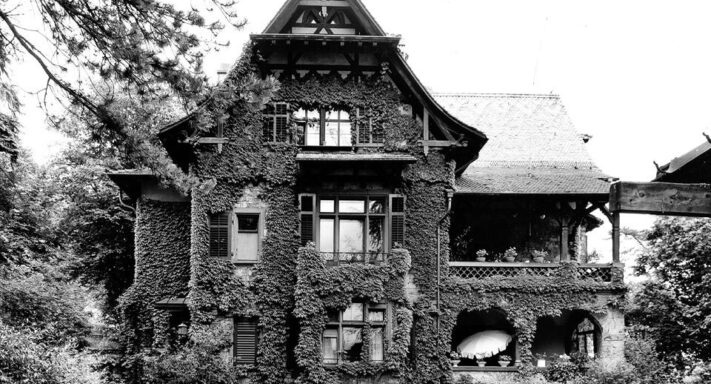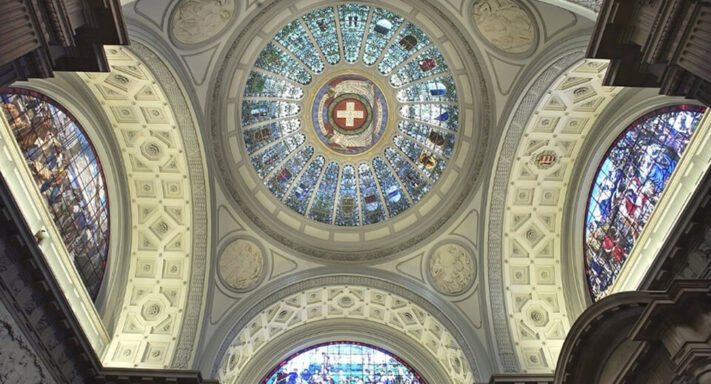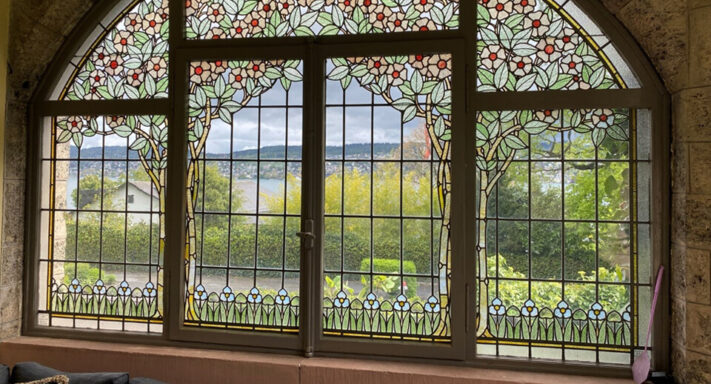Villa Zehntenhof
The Villa Zehntenhof is a listed building and heritage site.
Dr. Borer Consulting
Dr. Borer Consulting will be happy to welcome you to the historic premises of the Villa Zehntenhof. The Villa Zehntenhof is a listed building and a heritage site. It was designed by the architect Müller, a pupil of the famous Semper, who notably designed the ETH and the Semper Opera House in Dresden. Some windows were made by the architect and glass painter Johannes Albert Lüthi, who also decorated the glass dome of the Bundeshaus.



Below you will find the most important information about the Zehntenhof:
- 1843 Weidmann acquires the Hoz dye works.
- 1857 The eldest son, August Weidmann, begins a three-year apprenticeship in his father’s business and then goes on the road.
- 1861 August Weidmann returns to Thalwil. In the following years he works as a manager.
- 1867 After the bankruptcy of Daniel Friedrich Weidmann, his son, together with his childhood friend Jakob Julius Schwarzenbach, son of the silk manufacturer Johannes Schwarzenbach-Landis, takes over the dyeing business under the name “Schwarzenbach & Weidmann” and continuously expands it.
- 1895 Construction of the country house “Zehntenhof”. The architects Ludwig & Ritter build the residence according to the plans of Albert Müller, the director and teacher of the Gewerbemuseum and the Kunstgewerbliche Fachschule in Zurich. He was a student and collaborator of Gottlieb Semper. The flat carvings on the wooden ceilings are by Prof. Joseph Regl. In the same year Schwarzenbach leaves the company and Weidmann becomes the sole owner of the dye works.
- 1928 August Weidmann dies; the country house remains in the possession of the dye works until the turn of the millennium.
- 1950s Interior renovation
- 1988-1989 Facade and roof renovation
- 2006 Purchase by Dr. Thomas Borer
- 2006-2007 Extensive interior renovation and alterations
Johann Alber Lüthi, Arichtekt and glass painter
Education and occupation
He was born in Hottingen, a district of the city of Zurich that was incorporated in 1893. His home town was Flawil (SG) in the canton of St. Gallen. From 1876 to 1880 he attended the Polytechnikum in Zurich, today’s ETH Zurich. In the last two years of his life Lüthi was director of the Zurich School of Arts and Crafts from 1901.
Works
Johann Albert Lüthi produced stained-glass windows for the Henneberg Gallery in Zurich, for the Michaelskirche in Zug, for the Kunstgewerbemuseum in Zurich and for the Christuskirche in Karlsruhe. He also created designs for the windows of the Lukaskirche in Dresden and for three round windows in the Reformed church in Rorschach. A colour window with the poetic title Blüte der Arbeit im Gefolge des wahrhaften Friedens (Blossom of Work in the Wake of True Peace) was created by Albert Lüthi as the German contribution to the World Exhibition in Paris in 1900. It later found its place in the so-called Kapellchen, the vaulted vestibule of the Ratskeller (Council Cellar) in the neo-Gothic Bürgerhalle building of the Frankfurt Römer. He created the coloured glass windows for the chapel of the Bürgerhospital of the Senckenberg Foundation in Frankfurt am Main.
For the parliament building in Bern, he designed 22 coats of arms of the Swiss cantons. Grouped radially around the mosaic are the coats of arms of the then 22 cantons (the half-cantons each share one coat of arms). These stained-glass windows by Johann Albert Lüthi, in conjunction with the mosaic, symbolise on the one hand the centralising function of the Confederation, and on the other hand the mutual dependence of the Confederation and the cantons.
Lüthi made the three windows in the chancel for the German Protestant Church on the island of Capri, whose architect was the Dane Aage von Kauffmann (1852-1922). They were donated by Countess Harrach zu Rohrau und Thannhausen (1901) in memory of her son Leopold, who died there at an early age.
Frankfurt location
Albert Lüthi married Rose Miller (1863-1918). His parents-in-law were Friedrich Miller (1832-1892), founder and partner of a special engineering company, and his wife Rosa Müller (* 1844). Shortly before his death, Friedrich Miller moved into a villa in the upmarket, newly developed residential area of Frankfurt-Bockenheim, where Albert Lüthi also had his office.
- Dome of the Bundeshaus in Bern, coat of arms of the 22 cantons by Albert Lüthi
- Christ Church in Karlsruhe with glass windows by Albert Lüthi
- Lutheran Church of St. Luke in Dresden
- St. Michael’s Catholic Church, Zug
- Former Bürgerhospital Frankfurt, immediately adjacent to the hospital chapel, before relocation to Nordend
- Civic hall building of the Frankfurt Römer, on the left entrance to the Ratskeller with chapel incl. stained glass windows by Albert Lüthi
Literature
- Karl Moser: Albert Lüthi – Architekt, Maler, Glasmaler (1858–1903). Neujahrsblatt 1906 der Zürcher Kunstgesellschaft, Verlag Fäsi & Beer, 1905.
- Heinrich Ludwig: Geschichte des Dorfes und der Stadt Bockenheim. Frankfurt am Main 1940, S. 302 f.
- Franz Lerner (Hrsg.): Das tätige Frankfurt im Wirtschaftsleben dreier Jahrhunderte (1648–1955): Zugleich ein Handbuch der Altfrankfurter Firmen. Frankfurt am Main 1955, S. 217.
- G. Gall, E. A. Haberstroh: 1863–1963. 100 Jahre Maschinenfabrik Moenus AG. Neustadt/Weinstraße 1963.

Federal Palace dome, Bern: 22 coats of arms of the cantons, 1902; the canton of Jura was later arranged in a semicircle in 1978

The glass painting by Albert Lüthi in the Fischer-Weber villa, Meisterschwanden, requested 1899. (© Kantonale Denkmalpflege Aargau, Foto Christine Seiler)

Dorotheum, sold to unknown Research in the Historical Museum on the Main revealed that this is most probably a work by Johann Albert Lüthi. Almost the same motifs as in the present window, the young lady surrounded by flowers, behind her the sheep in the landscape and the two churches in the background, were present in 2 drawings by Lüthi. There are 600 designs by J. A. Lüthi in the Frankfurt Historical Museum.

The glass paintings (front window) by Albert Lüthi in the Villa Shawne (Zehntenhof), Thalwil, erb.1895 mentioned in: Isabel Haupt "Freude am eigenen Heim", p:55. The double doors are replicas. (Photos © Verschönerungsverein Thalwil, Photos Peter Jäger)

Horgener Jahrbuch 2004 «100 Jahre Seerose»

S: 18 Albert Jörger

(Photos © Verschönerungsverein Thalwil, Peter Jäger)